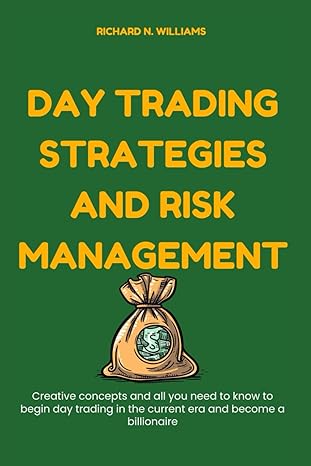Question
A newly issued bond pays its coupons once annually. Its coupon rate is 7.2%, its maturity is 20 years, and its yield to maturity is
A newly issued bond pays its coupons once annually. Its coupon rate is 7.2%, its maturity is 20 years, and its yield to maturity is 9%.
Required:
Find the holding-period return for a 1-year investment period if the bond is selling at a yield to maturity of 8% by the end of the year.
If you sell the bond after one year, what taxes will you owe if the tax rate on interest income is 40% and the tax rate on capital gains income is 30%? The bond is subject to original-issue discount tax treatment.
What is the after-tax holding-period return on the bond?
Find the realized compound yield before taxes for a 2-year holding period, assuming that (i) you sell the bond after two years, (ii) the bond yield is 8% at the end of the second year, and (iii) the coupon can be reinvested for one year at a 3% interest rate.
Use the tax rates in part (b) to compute the after-tax 2-year realized compound yield. Remember to take account of OID tax rules.
A. Find the holding-period return for a 1-year investment period if the bond is selling at a yield to maturity of 8% by the end of the year. Note: Do not round intermediate calculations. Round your answer to 2 decimal places.
B. If you sell the bond after one year, what taxes will you owe if the tax rate on interest income is 40% and the tax rate on capital gains income is 30%? The bond is subject to original-issue discount tax treatment. Note: Do not round intermediate calculations. Round your answers to 2 decimal places.
Tax on interest incomeTax on capital gainTotal taxesC. What is the after-tax holding-period return on the bond? Note: Do not round intermediate calculations. Round your answer to 2 decimal places.
D. Find the realized compound yield before taxes for a 2-year holding period, assuming that (i) you sell the bond after two years, (ii) the bond yield is 8% at the end of the second year, and (iii) the coupon can be reinvested for one year at a 3% interest rate. Note: Do not round intermediate calculations. Round your answer to 2 decimal places.
E. Use the tax rates in part (b) to compute the after-tax 2-year realized compound yield. Remember to take account of OID tax rules. Note: Do not round intermediate calculations. Round your answer to 2 decimal places.
Step by Step Solution
There are 3 Steps involved in it
Step: 1

Get Instant Access to Expert-Tailored Solutions
See step-by-step solutions with expert insights and AI powered tools for academic success
Step: 2

Step: 3

Ace Your Homework with AI
Get the answers you need in no time with our AI-driven, step-by-step assistance
Get Started


